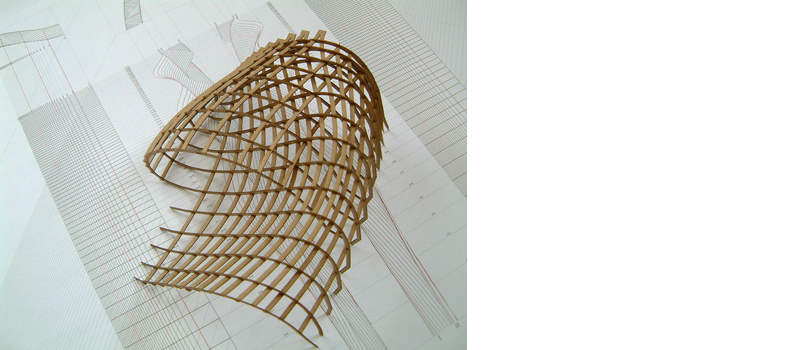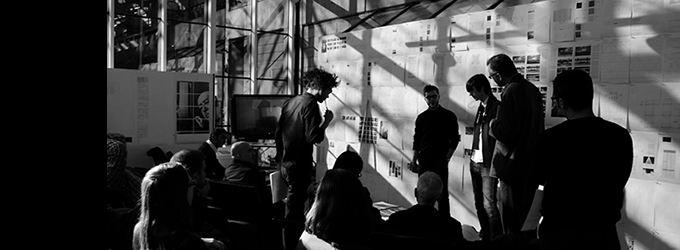
Graduate Studios Taught by George L. Legendre
Our studios explore the syntax of architectural creativity, with its long-term continituities (and occasional breaks).
Option GSD 1314 Mies Immersion (2009). Final review.
2023
ANNUATED CIVIC TYPOLOGIES - NETWORK RAIL UK
Harvard GSD, Cambridge MA, USA
This studio revisits a theme we first explored in the option studios Block Blob Mat Slab Slat (2015) and—to a lesser extent— Intuition and the Machine (2020).
The theme is architectural typology, i.e. the nineteenth century conceit that spaces ought to be planned according to some common blueprint, or type.
This particular brief is modelled on the international competition launched in 2020 by British Network Rail for the rebuilding of 2000 ‘small to medium’ stations
set across a wide range of urban and rural contexts in the United Kingdom, whereby competitors were invited to devise alternatives for a collection of individual interventions,
as opposed to a single building approach.
Option Studio GSD 1320. Brian Zug, Appleby Northumbria.
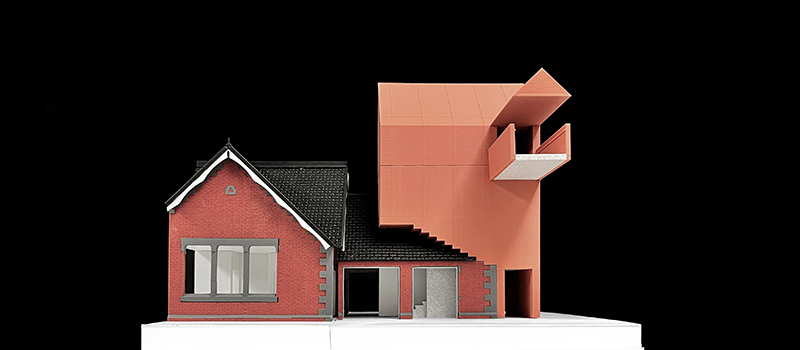
2022
KIT HOUSE
Harvard GSD, Cambridge MA, USA
The studio extends and resumes a line of enquiry carried out in 2018 and 2019 with a focus on the unique, all-American cultural phenomenon known as a Kit House.
This quintessentially American experiment lasted between 1908 and the Great Depression - the last one having shipped around the end of 1940.
Participants are invited to propose a contemporary concept of the Kit House, starting with their own understanding of the notion of Kit.
The brief is completely open, but we will pay special attention to the following design issues: Packaging, Transport and Shipping, Documentation and Nomenclature, and Building by Numbers.
Option Studio GSD 1320. Sara Ann Wong, Geminate House.
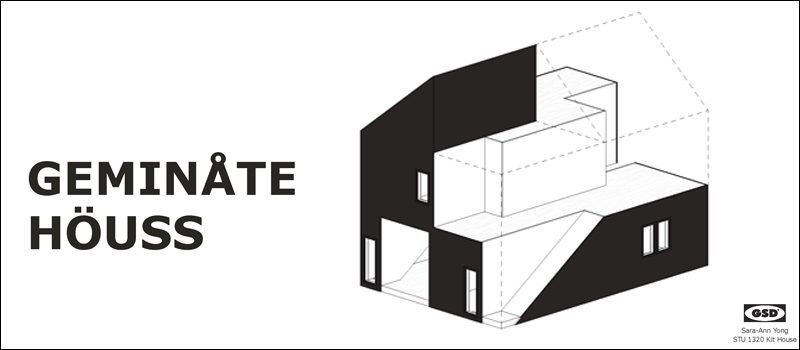
2021
INTUITION AND THE MACHINE
Harvard GSD, Cambridge MA, USA
The difference between intuitive and machinic is not as clear-cut as doing something ‘manually’ versus doing it ‘with the computer’.
There are manual moves that are machinic in spirit, just as there are intuitive deployments of algorithmic design, which the designer cannot even explain.
This studio combines the experience of a multi-year design research agenda with the fresh outlook of a collaborative design experiment.
The purpose of the experiment is to examine, through projects, the role intuition –as well as rules and protocols– plays in design.
Option Studio GSD 1314. Jan Kwan, Shun Yin Gabriel Lam, Artificial Architecture (AI-generated design)
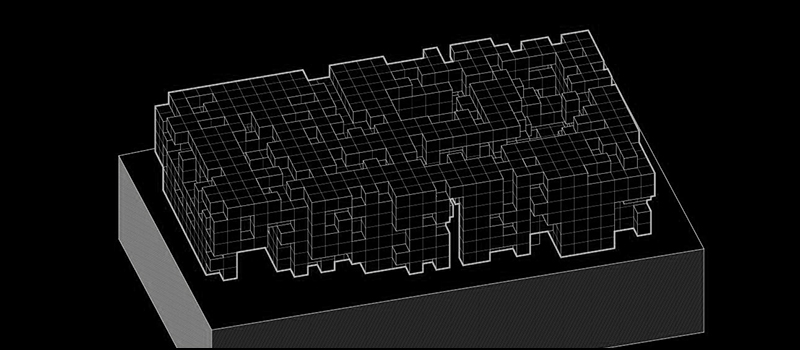
2020
SEDIMENTARY COMPOUNDS - MONTREAL OLD CITY
Harvard GSD, Cambridge MA, USA
Our site of intervention is located in the historic harbour of old Montreal. Through dating no further back than the seventeenth century, the historic berth of the city shares
key characteristics with the much older central Paris, and the medieval mile of the City of London. All three are Sedimentary Compounds, i.e. historic settlements saturated with layer upon layer
of construction, demolition, and partial recycling of physical boundaries and foundations, determining the scale of the city’s grid, the alignment of party walls,
and the persistent outline of streets and passages -some of which have stood there for centuries, while others are barely 30 years old.
Option Studio GSD 1314. Yang Fei, A New Centre for the Phi Foundation.
2019
MODEL AS BUILDING - BUILDING AS MODEL II
Harvard GSD, Cambridge MA, USA
This studio explores the re-emergent phenomenon known as OFFSITE or OSM, whereby projects of any size or purpose are designed and built anywhere, except on site.
Option Studio GSD 1314. Adrian Wong, Edinburgh Bothy.
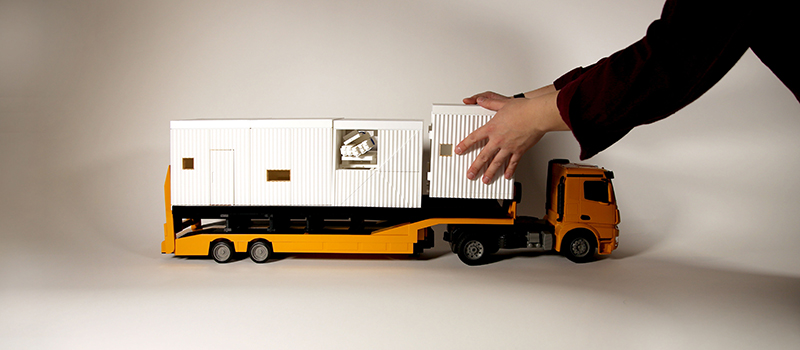
2018
MODEL AS BUILDING - BUILDING AS MODEL I
Harvard GSD, Cambridge MA, USA
This studio explores the re-emergent phenomenon known as OFFSITE or OSM, whereby projects of any size or purpose are designed and built anywhere, except on site.
Option Studio GSD 1314. Jinwoo Kim, Falkland Bothy.
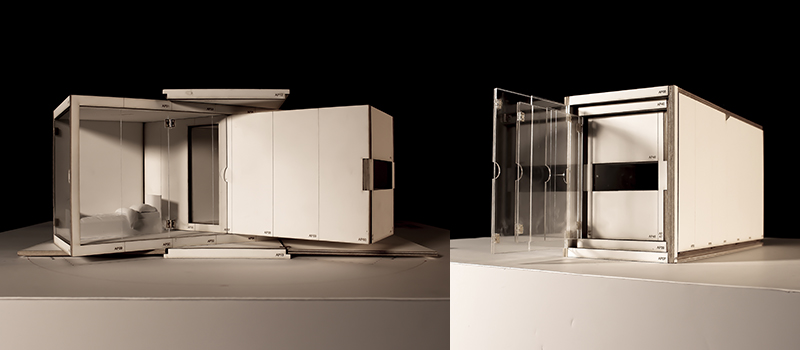
2015
BLOCK BLOB MAT SLAB SLAT
Harvard GSD, Cambridge MA, USA
The eighteenth-century conceit that space ought to be planned according to types is almost universally extinct - but two recent events have given it some form of reprieve: In urban China, the prospect of housing 4,000 into a single block has reawakened the same historicist appeal to type which obsessed Europeans during their own (post-war) boom. Further to that, the emergence of parametric design has rejuvenated the notions of variation and versioning - creating, as a bonus, its own types.
Option Studio GSD 1315. Royce Perez, Fani Papadopoulou
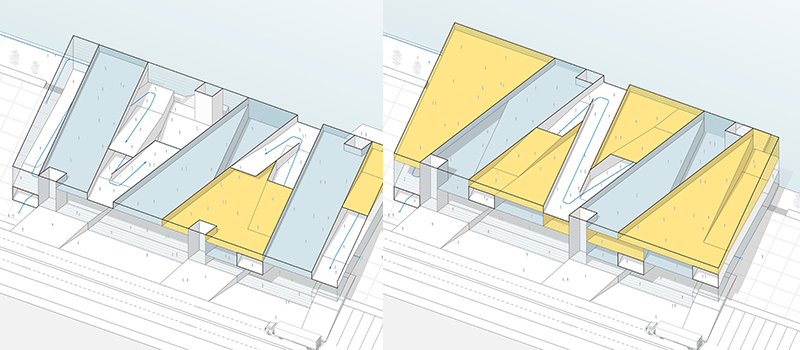
2014
REAL AND IMAGINARY VARIABLES FINAL: GLOBAL ARENAS
Harvard GSD, Cambridge MA, USA
Like high-rise collectives, sports arenas belong to a type that won’t surrender its integrity to the vagaries of site or programme. The result is a strangely stable architectural type, which, give or take the odd technical innovation, has not changed that much from ancient Rome to modern Beijing.
Option Studio GSD 1316. Lai Zunheng, Weishun Xu, Tim Zeitler (left). Jeonghyun Kim, Julia Michals (right).

2013
REAL AND IMAGINARY VARIABLES II: ART SPACES Harvard University Graduate School Of Design, Cambridge MA, USA
The explosion of large private galleries and kunsthalles has firmly established the genre as the most exciting (if self-indulgent) of briefs: luxurious, inefficient buildings full of empty rooms, regulated for comfort through state-of-the art envelopes and environmental systems, vehicles of financial investment, national pride, and artistic fulfilment (or deceit).
Option Studio GSD 1314.Waqas Jawaid and Michael Leef.
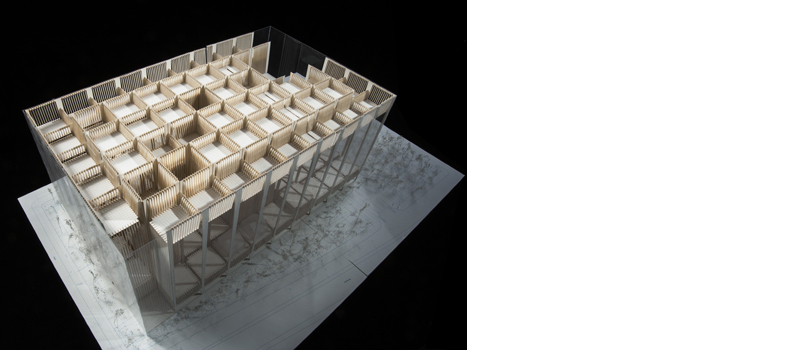
2012
REAL AND IMAGINARY VARIABLES I ART SPACES Harvard University Graduate School Of Design, Cambridge MA, USA
Typological investiagation: exhibition planning, lighting, circulation, environmental control, back and front-of-house.
Theoretical proposals for the National Museum of Art and Design at Vestbanen, Oslo.
Option Studio GSD 1316. Arthur Liu, Nick Croft, Billy Quattlebaum.
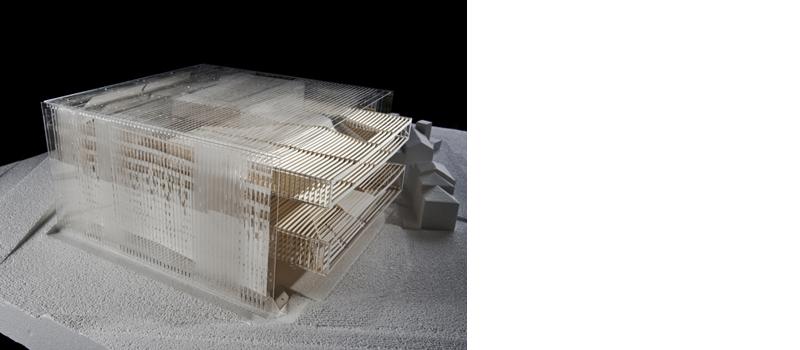
2010
RISING MASSES III Harvard University Graduate School Of Design, Cambridge MA, USA
Unlike Frankfurt or London, where the theme of high-rise undergoes cyclical fortunes of infamy and rehabilitation, Manhattan has been quietly investing in the type for a century and is now witnessing the birth of its nth generation of high-rises. In this, it has been closely following the founding principles of the ‘Delirious’ Way: a fondness for ‘artificial’ and regulated living; a enthusiastic acceptance of high-rise living; and, critically, the tenet that programmatic fantasies must remain private, and all outward expressiveness banned.
Option Studio GSD 3404. Rich Liu and Kaz Yoneda.
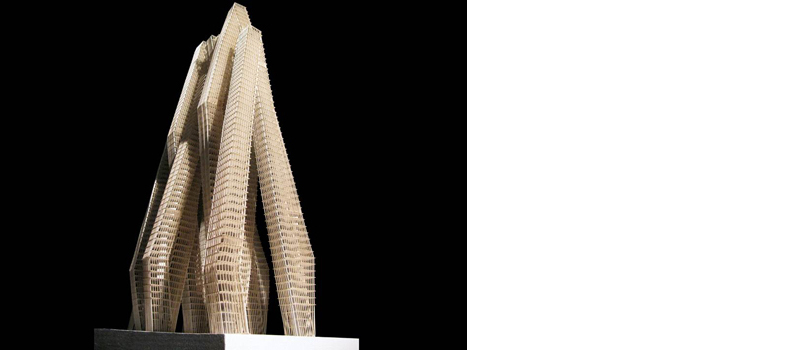
2009
MIES IMMERSION II Harvard University Graduate School Of Design, Cambridge MA, USA
Rather than looking like Mies, or signifying like Mies (i.e. trying to affect our contemporaries in the same way that Mies’ work impressed his own audience), we will simply strive to be like him once again. Pointed studies in mathematical and sensual aesthetics will provide the basis for individual or group projects leading to the deployment of instrumentally updated prototypes in response to the material and programmatic requirements of the terrifying ‘blank’ horizontal typologies at which Mies excelled.
Option Studio GSD 3404. Jae-Min Ha and Seong-Sok Ko

2008
RISING MASSES II Harvard University Graduate School Of Design, Cambridge MA, USA
Unlike Frankfurt or London, where the theme of high-rise undergoes cyclical fortunes of infamy and rehabilitation, Manhattan has been quietly investing in the type for a century and is now witnessing the birth of its nth generation of high-rises. In this, it has been closely following the founding principles of the ‘Delirious’ Way: a fondness for ‘artificial’ and regulated living; a enthusiastic acceptance of high-rise living; and, critically, the tenet that programmatic fantasies must remain private, and all outward expressiveness banned.
Option Studio GSD 3404. Ana Flor and Rodia Valladares.

2007
RISING MASSES I AA School of Architecture, London UK
At the far end of the spectrum, we will scavenge the latest trends of global academicism to formulate our instrumental ideas in the context of what has become (after the demise of the European Grand Prix de Rome in the last century) the hottest academic undertaking: planning high-rise structures for the fast-paced economies of the 21st century. However, rather than simply aligning ourselves with such a topical problem, we will take on frontally the apparent paradox posed by the high-rise type, circa 2008.
Diploma Unit 5 Kris Dyvik & Anna Nagel
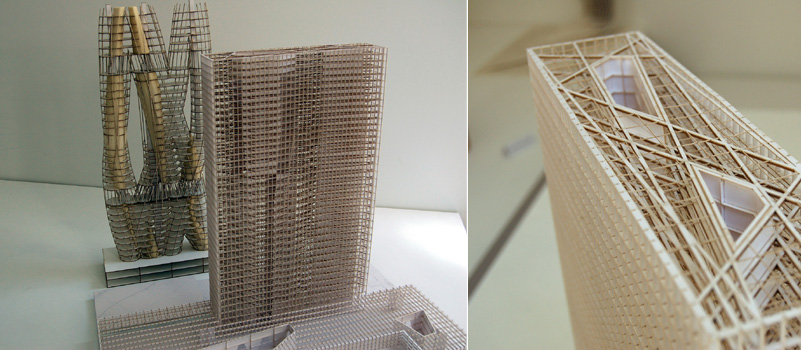
2006
MIES IMMERSION I AA School of Architecture, London UK
Rather than looking like Mies, or signifying like Mies (i.e. trying to affect our contemporaries in the same way that Mies’ work impressed his own audience), we will simply strive to be like him once again. Pointed studies in mathematical and sensual aesthetics will provide the basis for individual or group projects leading to the deployment of instrumentally updated prototypes in response to the material and programmatic requirements of the terrifying ‘blank’ horizontal typologies at which Mies excelled.
Diploma Unit 5 Maro Riga
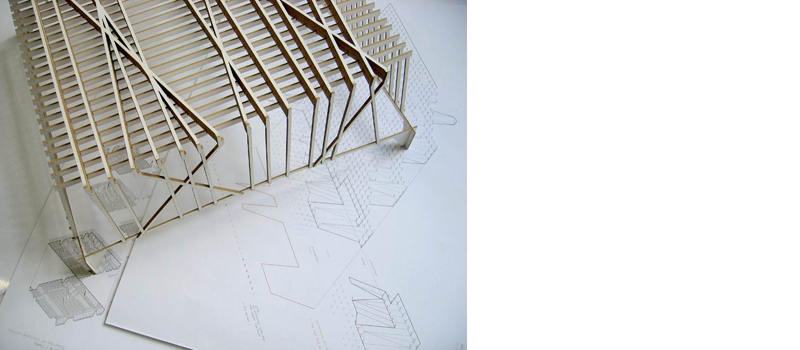
2004-5
ENGINEERING THE IMMATERIAL AA School of Architecture, London UK
As of this autumn Diploma unit 4 will consolidate its pedagogy into a three-tier research programme on materiality, immateriality, and building. We will centre on the conceptual prototype of variable parametric surface and the modalities of transition between the immaterial and matter.
Diploma Unit 5 Matt Chan

2003-4
SUPERFICIAL SPACES Princeton School of Architecture, NJ USA
At a time when architectural discourse and practice are brimming with references to new geometries, this offering investigates the architectural potential of abstract three-dimensional surfaces. Hand-in-hand with the more practical ambition of the option studios, it is intended to help us devise formal prototypes for architectural consumption while broadening our understanding of the rigours of abstraction and formal analysis.
Design Seminar ARC 596 Yusuke Okabayashi
